#tokyo regionals 2023
Explore tagged Tumblr posts
Text



Shoma Uno in the audience of the 2023 Tokyo Regionals at September 24, 2023, to support Marin Honda during the Women's Singles Free Skate.
#shoma uno#tokyo regionals#tokyo regionals 2023#had a moment yesterday when i realize that we are already one year into shoma's official boyfriend era#also pretty sure that's taichi#and hidetsugu#god i wonder if shoma has ever visited the figure skating bar hidetsugu runs hhhhhhh
50 notes
·
View notes
Text



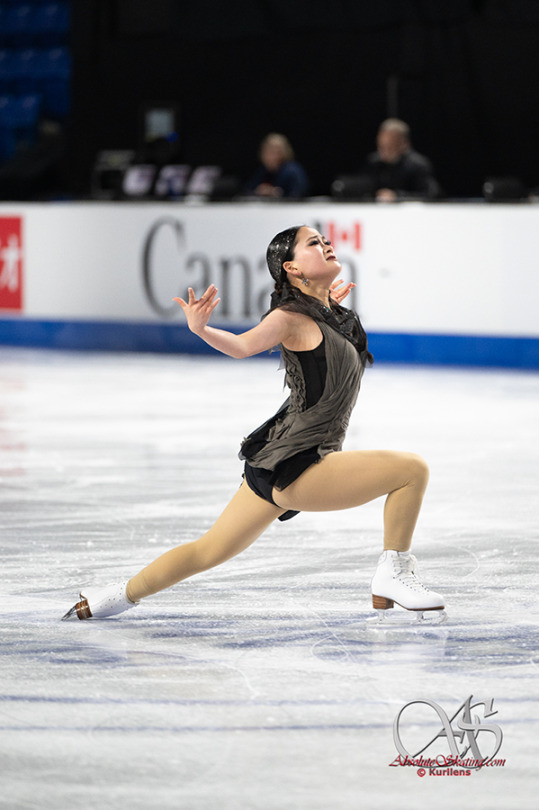
Rinka Watanabe's unusual free program dress at the 2023 Tokyo Regionals, 2023 Finlandia Trophy and 2023 Skate Canada. She skated to music by Ólafur Arnalds, Woodkid and Max Richter, and music from Perfume: The Story of a Murderer.
Now that I look at it again, there are elements I like. But boy that neckline overwhelms everything.
(Sources: sponichitokyophoto, Wilma Alberti and Absolute Skating)
#Rinka Watanabe#Figure skating#Olafur Arnalds#Woodkid#Max Richter#Perfume#Japan#Women#2023–2024#2023 Tokyo Regionals#2023 Finlandia Trophy#2023 Skate Canada
24 notes
·
View notes
Note
Could you recommend me 1-2 good "standard" bl from each of the main bl producing countries (China, Japan, Taiwan, Thailand and South Korea)? I'm interested in the differences in tropes and execution between bl from different countries, especially Taiwan and Thailand. I'm looking for bl that's highly rated because it's well-executed but doesn't stray from the expected formula for its region.
Great BLs that ALSO rep for their country's style
I really took the "represent" part seriously. Here are my (end of 2024) quick pulls, explanations etc in the linked posts at the bottom.

Japan
Seven Days (or I Cannot Reach You)
Old Fashion Cupcake
For the darker stuff: Tokyo in April is

Korea
Semantic Error
To My Star
For their new style of darker stuff: The 8th Sense or Love for Love's Sake

Thailand
These were absolutely the hardest to pick, so I couldn't stick to 2. There's just so much Thai BL.
My School President - best high school rep (heritage = Love of Siam, Love Sick, the true Thai BL beginnings)
Bad Buddy - best uni BL rep (heritage = 2gether, SOTUS, the beginning of Thai BL global dominance) alternative = Oxygen which is possibly the most classic Thai uni BL we have ever gotten (but Bad Buddy is better acted)
We Are - best GMMTV ensemble piece, heritage is actually also Love Sick, but in 2024 everyone is gay.
Lovely Writer - best meta
My Ride - best pulp
The Sign - best wild what-the-actual-fuck? ride (KinnPorshe also an option)
For an example of the few times Thailand got elevated: I Feel You Linger in the Air or A Tale of Thousand Stars. But these are atypical, we only get a few of them a year from Thailand.
Taiwan
These were the easiest to pick.
We Best Love
Be Loved In House: I Do
But actually: History 4: Make Our Day's Count will tell you everything you ever needed to know about Taiwanese BL in one mess of a show. It's just... not that great.
China
Addicted
Word of Honor
The Philippines
Gameboys
My Day
Vietnam
Mr Cinderella
My Lascivious Boss
But by most standards neither of these are actually very good.
Here's a 2022 post where I talk about the differences between country's styles and approaches.
If you want representative samples from a historical perspective than I do that here:
In that post, you'll need to decide what kind of representation you want to consume though, because some are very old, and others newer, since this is set up to learn about the evolution of the genre.
I also wrote a whole series on the history of the genre along with my top 10 picks at the time (2022). It's old now but still holds up for what you want. I would say pick any two from the top ten of each list, but please understand my personal taste leans toward the lighter fluffier fare. (Which means my top ten from places like Japan is very skewed. Also several countries have added new top 10, for me personally, in 2023 & 2024).
Here's a fun one on the tropes people love in the different countries
And a personal favorite, very silly and not helpful at all.
(source)
#asked and answered#bls that best represent for their country#bl by country#bl style by country#bl tropes by country
56 notes
·
View notes
Text
Memo to the 'Experts': Stop Comparing Israel's War in Gaza to Anything. It Has No Precedent | by John Spencer
Israel's war against Hamas in Gaza has inevitably drawn comparisons to other battles or wars, both modern and from the past. These comparisons are mostly used to make the case that Israel's operations in Gaza are the most destructive in history, or the deadliest in history.
Yet while the use of historical analogy may be tempting for armchair pundits, in the case of Israel's current war, the comparisons are often poorly cited, the data used inaccurate, and crucial context left out. Given the scale and context of an enemy purposely entrenched in densely populated urban areas, as well as the presence of tunnels, hostages, rockets, attackers that follow the laws of war while defenders purposely do not, and proximity between the frontlines and the home front, there is basically no historical comparison for this war.
Let's start with the context: After Hamas crossed into Israel on Oct. 7, murdering over 1,200 Israelis in brutal ways that included mutilation and sexual assaults as well as taking over 200 hostages back into Gaza, Israel formally declared a defensive war against Hamas in Gaza in accordance with international law and the United Nations charter. Since, the IDF estimates it has killed 10,000 Hamas operatives, while Hamas claims that the total number of casualties is 24,000 (Hamas does not distinguish civilian deaths from militant deaths).

Hamas' strategy is to use Palestinian civilians as human shields, because their goal is not to defeat Israel's military or to hold terrain; it is far more sinister and medieval—to use the death and suffering of Palestinian civilians to rally international support to their cause and demand that Israel halt their war.
Meanwhile, Israel's war aims were more traditional: returning Israeli hostages, dismantling Hamas military capability, and securing their border to prevent another October 7 attack.
These goals required not one major urban battle but multiple. While Gaza is not the densest populated urban region on earth as many claim, it features over 20 densely-populated cities. And while the Israeli Defense Forces are engaged in fighting, Hamas has continued to launch over 12,000 rockets on nearly every day of the war from the combat area toward civilian-populated areas in Israel, literally over the heads of the attacking IDF, who it bears mentioning are fighting just a few miles from their homeland and the homes of their soldiers.
Put all of this together, this war is simply without precedent. Certainly, it cannot be compared to the host of other wars that have been used for comparison sake to paint Israel in an unflattering light.
Some have compared Israel to Russia, yet there is simply no comparison. In the 2022 Battle of Mariupol, estimates of the number of civilians killed range up to 25,000, including 600 civilians killed in a single bombing of a theater with the word "children" written in giant letters around it. This is the same Russia that killed over 50,000 civilians (5 percent) of a 1.1 million pre-war population of Chechnya in 20 months of combat in the late 1990s in multiple major urban battles such as Grozny.
Or take Syria. Over 300,00 civilians have been killed in the Syrian war; an average of 84 civilians were killed every day from 2013 to 2023.
Others have compared the battles in Gaza to World War II air campaigns like the UK bombing of the German city of Dresden in 1945 that killed an estimated 25,000 civilians. But here, too, memory is selective: These same people discount air campaign cases such as the U.S. firebombing of Tokyo the same year that killed over 300,000 civilians, to include 80,000 to 100,000 civilians in a single night, causing more death and destruction than Dresden, Hiroshima, or Nagaski.
A battle that does bear a resemblance to Israel's war against Hamas is the 1945 Battle of Manila—the largest urban struggle of World War II, with more civilian casualties incurred than even the Battle of Stalingrad. The city had a population of 1.1 million residents as well as over 1,000 American prisoners of war being held in the city. It took the U.S. military 35,000 forces and a whole month to defeat 17,000 Japanese Navy defenders in and around the city.
Like in Gaza, the defenders used the city's sewer and tunnel systems for offensive and defensive purposes. And there were over 100,000 civilian deaths from the battle—one of the major factors of the 1949 Geneva Conventions, which stipulated the laws of armed conflict to further protect civilians and prevent civilian deaths.
Most experts compare the Gaza war to the recent urban battles against ISIS involving United States forces, including the 2016-17 Battle of Mosul. In that battle, over 100,000 Iraqi Security Forces, backed by American advisors and U.S. and coalition air power, took nine months to clear a city of 3,000 to 5,000 lightly armed ISIS fighters. The battle resulted in over 10,000 civilian deaths, 138,000 houses destroyed or damaged and 58,000 damaged with 40,000 homes destroyed outright in just Western Mosul. Iraqi Security Forces suffered 10,000 casualties. There were very limited, shallow, house-to-house tunnels, but no tunnel networks, no hostages, no rockets.
In April of 2004, the U.S. military was directed to arrest the perpetrators of an attack that caused the death of four American civilians and deny insurgents sanctuary in the densely populated city of Fallujah, Iraq, a city of 300,000 residents. The battle that ensued was later dubbed the First Battle of Fallujah. Because of international condemnation and political instability fueled by international media over a perceived indiscriminate use of force and civilian casualties, the U.S. forces were ordered by the U.S. Central Command Commander to stop the battle six days into it.
Estimates of the total civilian deaths from the battle range from 220 to 600. Six months later, in November 2004, the U.S. military initiated the Second Battle of Fallujah. It took 13,000-15,000 U.S., UK, and Iraqi forces six weeks to clear the city of 3,000 insurgents. There were some 800 civilian deaths even though the city's residents had largely evacuated before the battle. Over sixty percent the city's buildings were damaged or destroyed. But there, too, the enemy defenders did not have access to tunnels.
Ultimately, comparisons with both past and modern cases highlight the fact that there is almost no way to defeat an entrenched enemy defender without destruction, even while implementing all feasible precautions and limits on the use of force required by the laws of war.
Let's put away our military history books. There is no comparison to what Israel has faced in Gaza—certainly none by which Israel comes out looking the worse.
John Spencer is chair of urban warfare studies at the Modern War Institute (MWI) at West Point, codirector of MWI's Urban Warfare Project and host of the "Urban Warfare Project Podcast." He served for 25 years as an infantry soldier, which included two combat tours in Iraq. He is the author of the book Connected Soldiers: Life, Leadership, and Social Connection in Modern War and co-author of Understanding Urban Warfare.
#israel#antisemitism#israeli#israel news#israel under attack#israel under fire#terrorism#anti terrorism#hamas#antisemitic#antisemites#jews#jew#judaism#jumblr#frumblr#jewish#israelunderattack#resources#civilian casualties
115 notes
·
View notes
Text
Here's a complete recap of everything featured in this year's Sonic Central presentation
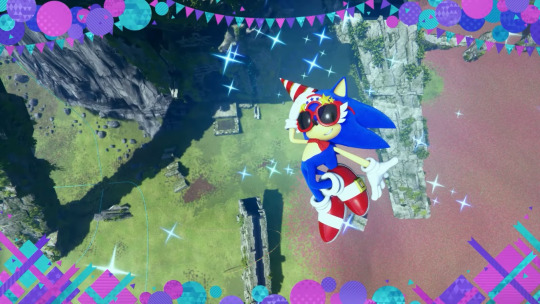
New collaborations with LEGO, an upcoming Sonic Frontiers DLC update, and a first look at Part 2 of Sonic Prime were among the major highlights in this year's Sonic Central presentation.
Here's everything you need to know.
Sonic Frontiers
Details on the second major content update for Sonic Frontiers was revealed in the Sonic Central. Titled "Sonic's Birthday Bash", it's scheduled for a release on 23 June 2023.
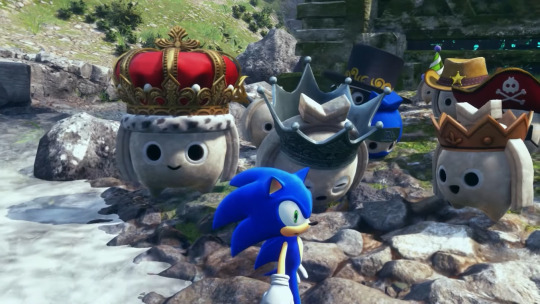
Sonic's Birthday: Celebrate Sonic's birthday in Sonic Frontiers with a new birthday theme, including a festive HUD, environment objects, a new birthday skin, and more!
Open Zone Challenges: Explore the Open Zone with all new challanges scattered throughout.
Spindash: The iconic Sonic move makes a return in Sonic Frontiers!
New Kocos: Some Kocos seem to dawn new outfits and some do seem a bit bigger than usual.
New Game Plus.
Sonic Superstars
A new teaser was shown promoting the new Sonic Superstars and LEGO collaboration, featuring LEGO Eggman as a pre-order bonus.



Following the presentation, SEGA dropped new renders and descriptions for all the characters featured in the upcoming game.
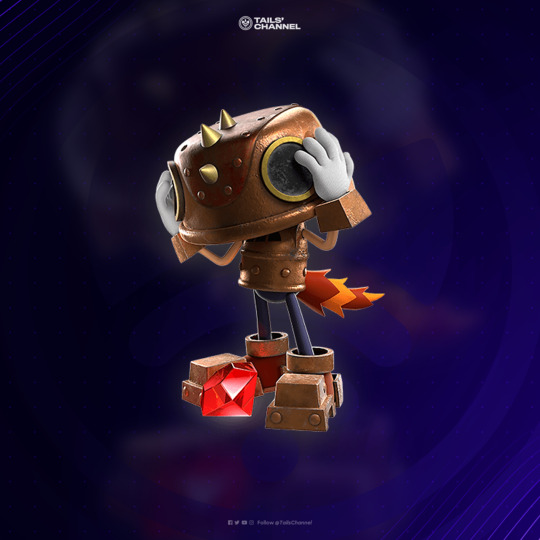

Trip: Not much is known yet about Trip, the mysterious girl first encountered by Fang on the Northstar Islands. While a bit clumsy, Trip is heavily armored and has been enlisted by Fang and Dr. Eggman to protect and guide them around the wonders of this uncharted region.
Fang the Hunter (formerly Fang the Sniper): Fang is a springy jerboa that is light on his feet and is always looking for the next big score. A bounty hunter by trade, Fang the Hunter has been known by many different names over the years, likely due to his “WANTED” status with the authorities. Always trying to stay one step ahead, he’s constantly modifying and upgrading his primary mode of transportation, the Marvelous Queen.
You can check out the rest of the descriptions for Sonic, Amy, Tails, Knuckles and Eggman here.
youtube
The official Sonic the Hedgehog YouTube channel also uploaded a new 3-minute video featuring Superstars producer Naoto Ohshima and Sonic Studio creative officer Takashi Iizuka.
They "talk in-depth about Superstars, including inspirations, challenges, and what it's like to create a new character."
Sonic Symphony World Tour

Here are the official tour dates for the Sonic Symphony from 2023 to 2024:
Sept 16, 2023 - London, Barbican Hall
Sept 22, 2023 - Paris, Le Grand Rex
Sept 30, 2023 - Los Angeles, Dolby Theatre
Oct 14-15, 2023 - São Paulo, Brasil Game Show
Oct 21, 2023 - Boston, Emerson Colonial Theatre
Oct 28, 2023 - Chicago, Auditorium Theatre
Nov 17, 2023 - Düsseldorf, Mitsubishi Electric Halle
Dec 15, 2023 - San Antonio, Majestic Theatre
Dec 29, 2023 - Atlanta, Cobb Energy P.A.C.
Jan 05, 2024 - Seattle, Paramount Theatre
Jan 06, 2024 - San Francisco, Davies Symphony Hall
Jan 20, 2024 - Washington DC, Warner Theater
Jan 27, 2024 - Kansas City, Kansas City Music Hall
Feb 11, 2024 - Tokyo, LINE CUBE SHIBUYA
Feb 17, 2024 - Toronto, Meridian Hall
Mar 24, 2024 - Montreal, Wilfrid-Pelletier Theater
Mar 29, 2024 - Portland, Schnitzer Auditorium
For more information such as ticket pricing and availability, check out the above links.
Sonic Prime

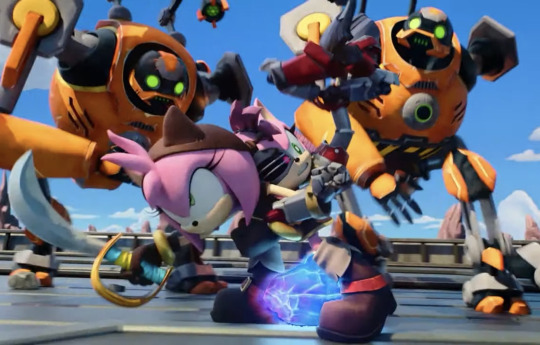

A new extended clip of the upcoming second content drop of Sonic Prime was previewed. It's scheduled to make its debut on Netflix in 13 July.
youtube
With the help of his ragtag group of Shatterverse allies, Sonic battles the Chaos Council for control of the powerful Paradox Prism, one Shard at a time.
Sonic Dash and Speed Battle
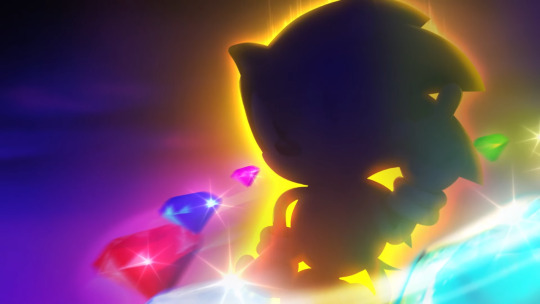
A new Classic Super Sonic skin will be joining SEGA HARDlight's flagship titles Speed Battle and Dash soon.
Other things of note, as reported last week:
To coincide with the release of the 2nd season of Sonic Prime, characters from Prime will be playable in Dash, including Boscage Sonic, Rusty Rose, and Tails Nine.
Alongside the Prime characters, Super Silver and an all new Dragon Hunter Lancelot will make their debut in Dash and Speed Battle later this month.
San Diego Comic-Con 2023

With Comic-Con coming this summer, a new pop-up restaurant featuring the blue blur will open near the show floor.
More details will be announced in the weeks ahead.
Merchandise

New Death Egg Set from Jakks Pacific: Based on the Sonic 4 Episode 2 final boss, fight The Egg Heart in the new Death Egg set.

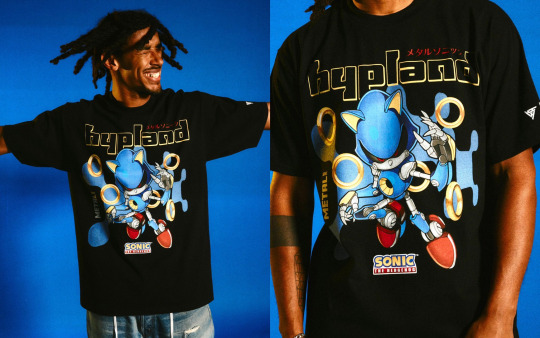

Streetwear brand Hypland announced their collaboration with Sonic the Hedgehog: The limited edition collection features an assortment of graphic tees and hoodies featuring Sonic and his friends meshed into contemporary streetwear designs.

S-Fire Sonic Statue: Pre-order the new Sonic & Shadow statue today with augmented reality compatibility.


Sonic has officially announced a collaboration with the popular shoe brand Crocs. As reported back in late May: it's available in adult and kids sizes, for $49.99 USD and $44.99 USD respectively. Besides the shoes themselves, Crocs will be offering Jibbitz charms. They will be coming in a pack of 5 with Sonic, Tails, Knuckles, Amy, and Shadow, offered at $19.99 USD.




Other things of note: a Sonic-themed Playmate cooler from Igloo, a themed guitar from ESP Guitars, and Sonic and Shadow Cable Guy figures.
Sonic Origins Plus
youtube
With Origins Plus out, SEGA released a new launch trailer.
With more content than ever before, and a new premium physical version, Sonic Origins Plus is the definitive way to play 16 classic Sonic games in one timeless collection.
LEGO



SEGA officially previewed the Death Egg Robot set, now scheduled for a release in August.
As reported via a leak earlier this month, it contains a Sonic mini figure accompanied with his speed sphere mechanism and the launcher to it; and the Death Egg Robot piloted by Eggman, and Cubot.
Samba de Amigo: Party Central
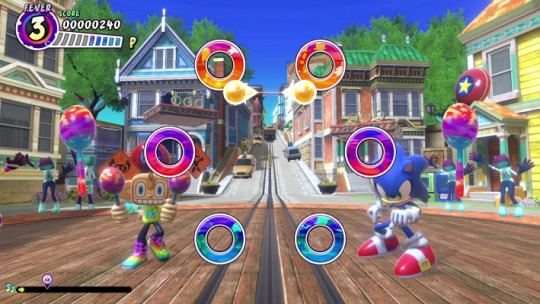
As reported, the upcoming Samba De Amigo: Party Central will be featuring the world's famous hedgehog as a guest character.
The game will feature two iconic Sonic tunes, Escape From the City and Fist Bump, alongside the City Escape stage itself.
IDW Sonic the Hedgehog

Today's Central presentation made a brief mention of IDW Publishing's upcoming one-shot issue for the Sonic the Hedgehog comic book series: Amy Rose's 30th Anniversary.
You can read more details in our report from earlier today.
Sonic Speed Simulator

Despite the developer's controversies, the officially-licenced Speed Simulator got a mention in the Central presentation.
Users can celebrate Sonic's birthday in style with the new Tuxedo Classic Sonic skin, out now.
Lastly...
TailsTube got a shoutout, and voice actor Mike Pollock dropped some fire bars in the LEGO collaboration video.
...and that's all! For news and updates anytime, be sure to follow @TailsChannel where you are on social media.
(Files contributed by the Tails' Channel Newsfeed.)
#sonic#sonic the hedgehog#sega#sega of america#gaming#sonic central#idw sonic the hedgehog#idw sonic#lego#sonic speed simulator#sonic speed sim#samba de amigo party central#samba de amigo#sonic forces mobile#sonic forces speed battle#sonic forces#sonic dash#miles tails prower#amy rose#fang the sniper#knuckles the echidna#doctor eggman#silver the hedgehog#shadow the hedgehog#classic sonic#sonic symphony world tour#sonic symphony#sonic frontiers#sonic frontiers update#sonic superstars
110 notes
·
View notes
Photo
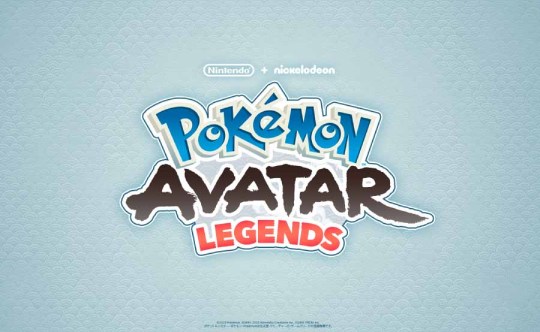
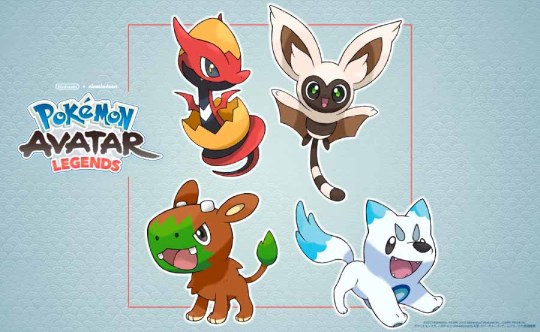
Update: It’s now April 2nd so I can confirm this was an April Fools’ Day joke! Check out some behind-the-scenes of Avatar News’ secret collaboration with Pokemon artist Maohi Region here!
Original below:
Pokemon Avatar Legends mainline crossover game coming to Nintendo Switch in fall 2024
This weekend at the 2023 Tokyo Consumer Electronics Convention, Nintendo and Paramount Japan unexpectedly announced a “mainline crossover game” between the worlds of Pokemon and Avatar, taking both the Pokemon Legends and Avatar Legends names to form something new and very unique: Pokemon Avatar Legends, coming to Nintendo Switch in fall 2024.
This was a blink-and-you-miss-it reveal as part of Nintendo’s presentation on their plans to expand their collaborations with western brands thanks to their confidence in the upcoming Super Mario Bros. movie made with Universal Pictures’ Illumination animation studio (technically one of Avatar Studios’ competitors!).
Right now the only info we have is in Japanese so I did my best with Google Translate, but the gist of it is that the Pokemon Legends brand is pivoting from its first game Pokemon Legends: Arceus’ historical alternate time period of an existing Pokemon region to totally alternate universes with regions and Pokedexes inspired by other franchises’ worlds, starting with Avatar.
The only images we have are these two slides from their presentation from Yahoo Finance Japan (if I can find them in higher resolution I’ll update this). One is just the game’s logo (which notably features a new simplified version of the Avatar logo) and the other is, very excitingly, a look at what are presumably the starter Pokemon, but instead of the usual three (grass, fire, water) there are a familiar four: water, earth, fire, air!
Water: polar bear dog (including the symbol from Naga’s harness?)
Earth/grass?: saber-tooth moose lion (specifically Sokka’s encounter with Foo Foo Cuddlypoops lol?)
Fire: dragon
Air/flying?: winged lemur
They’re literally so cute and it’s crazy seeing them translated into Pokemon style, but they did a good job-- whoever “they” is, not sure if these designs went through the standard Pokemon company process or if Avatar Studios contributed.
Speaking of which, right now we’re really not sure how this collaboration is going to work. The above is pretty much all the info we have right now-- it looks like the convention is mostly about business and Nintendo’s presentation was mostly about the Mario movie and Super Nintendo World at Universal Studios, with this new game basically just mentioned in passing as one of the ways they’re going to start expanding beyond that. I’m guessing there will be news in the US on Monday explaining more what’s going on from the Avatar franchise side. We’ve known for a while that Avatar Studios is making a big push with video games but no one could have guessed that this would be part of it!
Sit tight for more info, it should be coming soon!
100 notes
·
View notes
Text
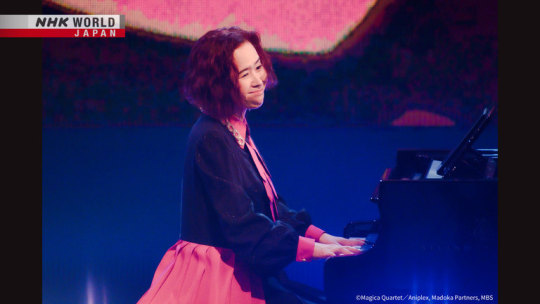

Broadcasting Schedule of “NHK WORLD – JAPAN MUSIC FESTIVAL” on NHK
Below is the information on when the “NHK WORLD – JAPAN MUSIC FESTIVAL” program will be aired, which was filmed on October 28th (Saturday), 2023 at the NHK Hall in Tokyo. The event can be viewed in 160 countries and regions around the world. It will showcase Japan's latest and cutting-edge artists to fans overseas.
NHK WORLD – JAPAN MUSIC FESTIVAL
NHK WORLD – JAPAN Channel: Part 1. 9:10 – 9:59 AM, November 19th (Sunday), 2023 (Broadcasted again in accordance with each country’s time zone from 3:10 PM, 9:10 PM, and 3:10 AM of next day) Part 2. 9:10 – 9:59 AM, November 26th (Sunday), 2023 (Broadcasted again in accordance with each county’s time zone from 3:10 PM, 9:10 PM, and 3:10 AM of next day)
NHK G Channel: 10:35 – 11:35 PM, January 3rd (Wednesday), 2024

Yuki Kajiura: Celebrating 30 years since her debut, Kajiura Yuki is a legend in the Japanese anime music scene. She performs a special medley, including the main theme of Kimetsu no Yaiba, and (!!!)Magia(!!!) [featuring Hikaru!], the theme song to Puella Magi Madoka Magica, along with SOUKYUU NO FANFARE, the 10th anniversary theme song for Sword Art Online featuring special guests ASCA and ReoNA.

Hikaru ch. 1st Anniversary Event
Official merchandise has been revealed for Hikaru's upcoming anniversary event on November 11. ◆Official Event Goods ・Acrylic stand (~6cm) ・Photocard Set (2 types) ・Logo Badge Set (32mm) ◆Original Drink (2 types) Comes with a random coaster (3 versions) ◆B-day LIVE Goods [remaining stocks] ・T-Shirt ・Cap ・Sicker set
Title: 『Hikaru 1st Anniversary Event』 Date: 2023/11/11 Venue: Akihabara TALK LIVE BAR from scratch Day: open 13:45; start 14:30; Night: open 17:15; start 18:00 Ticket price: ~4000 yen Ticket sale: 9/23 21:00〜10/07 23:59 ※first come, first served ↓↓ https://t.livepocket.jp/e/cm7zu
#kalafina#yuki kajiura#keiko#hikaru#NHK WORLD-JAPAN MUSIC FESTIVAL#magia#news#fictionjunction#live goods#live merchandise#Hikaru 1st Anniversary Event#Hikaru ch. 1st Anniversary Event
37 notes
·
View notes
Text
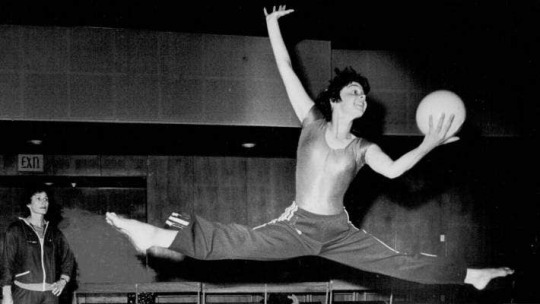
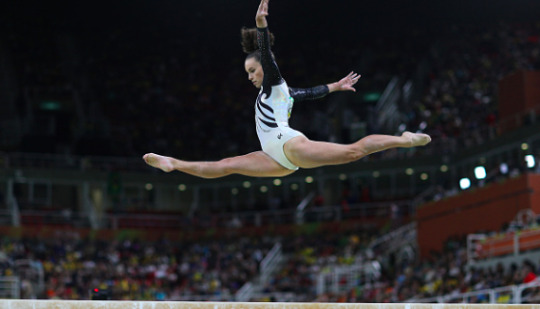
The New Zealand Problem
Sometimes you can see the issue that will light the gymternet on fire a mile away before anyone has even seen the smoke. And sometimes that fire had always existed.
In gymnastics one of the paths to qualification at the Olympics goes to the single highest all around placement at each continental championship from a country that did not qualify a team already. This is fairly straight forward in most places but gets dicey in one corner of the world. The Oceania Gymnastics Union is essentially a continental federation of 2 countries. Yes there are other members (Guam, Tonga, Fiji, Cook Islands, and America Samoa), but there are no elite gymnasts from those countries. Australia qualified a women's team to the Olympics, so by default that means a Kiwi WAG gets an Olympic spot. At least according to FIG. But they aren't the only ones who get to decide who is an Olympian.
I've talked about "No Olympic Tourist" Policies before, and people may have run into them in regard to Sweden and ice skating, but many small to medium sized countries have policies to limit the size of their own Olympic teams for budget reasons. These national Olympic committees (NOC) set criteria that are higher than the general qualification rules for a given sport. Sweden's is often considered the most extreme (you have to show you are in the top eight in the world, meaning you can make an Olympic final and contend for a medal. The reason they're called No Olympic Tourist Policies is because you wont be sent to the Olympics just to be there.
New Zealand has had a No Olympic Tourist Policy for decades, and while their criteria is less extreme then Sweden's it works similarly. You have to convince the NZOC that you are within the top 16 in the world (the ability to make a semifinal in athletics or swimming where races are 8 lanes wide). In 2012 Jordan Rae was one of the last gymnasts to qualify at the London Test Event, but NZOC turned down her spot and it passed on to Đỗ Thị Ngân Thương of Vietnam who finished behind her and who went on to compete in London.
In this interview from 2016, Rhythmic gymnast Tanya Moss-Barry who represented New Zealand in Los Angeles describes how initially they believed that New Zealand would send no gymnasts to the Olympics that year. Only a top 8 finish at an event in Tokyo convinced the NZOC to send her, and she believes it was at the expense of equally deserving WAG and MAG gymnasts. They would send only one of them.
It appears that Courtney McGregor was sent to Rio on the basis of her vaulting competitiveness. Which itself suggests that the people making the decisions at the NZOC don't really know much about gymnastics. McGregor came in 4th on vault at the Rio test event and 17th at 2015 Worlds. But as anyone who knows gymnastics knows... vault fields are much smaller than other apparatus and a finish in the teens doesn't mean you are as competitive as one on the other apparatus. But more power to them if they were able to get the Olympic committee to send her on that basis.
So the problem for 2024.
The WAG Olympic Qualification road has handed an Olympic spot to New Zealand by default. There are no other elite gymnasts in the region it can go to and no mechanism for that spot to be reallocated to anyone outside of Oceania. And based on the results from Worlds it is highly doubtful that the NZOC will consider either Madeleine Marshall (93rd in the AA and 110th on beam) or Reece Cobb (102nd in the AA and 56th on beam) to be competitive. Courtney McGregor is making a comeback but without competing elite in years I'm not sure how she makes that case either.
Georgia-Rose Brown recently changed countries from Australia to New Zealand but she almost certainly is banking on making an argument for her competitiveness based on her bars results (she came in 4th and 5th on bars at two World Cups in 2023). Maybe the people making a choice at NZOC wont know that 2023 World Cups aren't evidence of competitiveness. Her best bars result of the entire quad would have put her in 22nd on bars at 2023 Worlds. If she qualifies here is to hoping she can make a case. But it does raise the question of if she knew about the NZOC policy before changing countries or if she saw the automatic NZ WAG qualification spot as an opportunity and didn't realize there was an extra step. I have to believe she went into it knowing though. The NZOC is pretty well known in Kiwi circles.
So what happens to this spot if it goes to a Kiwi and the NZOC turns it down? Well... that's not clear. It could go unfilled. Or FIG could ask the IOC permission to let them revert it to the Worlds AA results as Australia's team means that Oceania already had representation.
Or some smart cookie NCAA gymnast with ties to Guam or Fiji could make a country change REAL soon and find themselves at the Olympics with a relatively easy path.
21 notes
·
View notes
Text
Six weeks after Li Wenliang blew the whistle in Wuhan on an emerging infectious disease in early 2020, cities around the world locked down and turned into hotspots. From Rome to Tokyo to San Francisco and Los Angeles, COVID-19 ripped through the most populated areas of the world. By the end of that year, America’s cities—Detroit, Boston, and New Orleans among them—had death rates from the virus 20 percent higher than other regions of the country.
In New York, where I serve as health commissioner, almost 50,000 residents died, the majority in the first three months, denting New Yorkers’ life expectancy by nearly five years. It was the steepest drop in lifespan in the world that year.
Public health institutions and the field as a whole learned much from our successes and failures during the pandemic. The critical nature of healthcare supply chains; supporting our public health workforce, especially at the front lines; the essential process of community engagement for healthcare promotion, vaccination, and disease prevention; the importance of combatting misinformation and disinformation online and in person; the need to tear down our data silos so we can make faster, better decisions. The list goes on and on.
However, as new threats arise and old ones intensify, there is still much to learn. Cities—concrete jungles that experienced the worst of COVID-19, and in some ways, struggled the most with the public health response in the early days of the pandemic—may be our best teachers on how to keep our world safe and healthy.
That’s because the sentinel cases for brooding public health threats, whether infectious or not, are often in cities. Cities are the canaries in the public health coal mine, for everything from mental health and homelessness, climate change to forced migration, substance use to sex trafficking. The way these challenges play out across our cities should not only drive national policy, but also serve as an important corollary for how to respond in less dense, less diverse, more rural areas. Yet when we consider the multilateral institutions where decisions are made and policymaking happens, cities rarely have any role in governance.
The reasons for city-as-public-health-epicenter are simultaneously obvious and not so obvious. For one, urban densification has accounted for the majority of population growth, even as land mass occupied by cities is growing. Today, around 56 percent of the world’s population live in cities—a percentage that experts expect will grow to 70 percent, with population doubling, by 2050. There is also the historic boom in airplane travel both domestically and internationally, which means communicable diseases (like SARS, swine flu, and mpox) can leap across borders faster than ever, quickly overtaking cities’ health systems.
An example of this in New York City in 2022 was when an old virus, mpox (formerly known as monkeypox), began circulating in explosive new ways among men who have sex with men. NYC had become the national and global epicenter.
Despite facing critical shortages of vaccine, in June 2022 we began vaccinating men who had the highest risk of getting infected, well ahead of the anyone else in the nation, including the federal government. This critical intervention to curb the virus’s spread helped bend the curve of mpox within a few weeks, by early August. Not only did our response set the tone for the rest of the national mpox response, it also influenced the way in which many other global centers responded.
The same happened with tuberculosis (TB), another old microbe—and one that remains a leading infectious killer in the world. Between 2022 and 2023, the U.S. has seen a dramatic 14 percent year-on-year increase in tuberculosis cases nationwide. NYC is once again at the country’s frontlines, with a 28 percent increase over the same period. The drivers of TB’s resurgence are manifold, but one is the shifting pattern of migration worldwide due to climate change, war, and economic and political instability.
NYC health officials again leapt into action. We not only increased investment into our TB program in response, but since 2014 have pioneered new and effective ways to control the disease including award-winning “video directly observed therapy” where a health worker observes the patient taking their daily medications. This telehealth protocol has now become a part of TB control guidance recommended by the World Health Organization.
But while cities like New York are battling disease threats with drive and innovation, a lack of formal representation in multilateral institutions means that cities are more susceptible to security concerns, bioterrorism, and economic disruption. Cities are largely expected to navigate their response to global health crises in silos, without a clear and dedicated means to exchange ideas between them. Moreover, they typically do not have a meaningful say in how their national counterparts navigate domestic responses or global deliberations.
That was New York City’s early experience during the pandemic.
As COVID-19 tore through our five boroughs in the early weeks and months—from Sheepshead Bay and Jamaica to Battery Park, Harlem and Hunts Point—New York’s public health authorities produced their own messaging campaigns; partnered with private corporations and others to source materials and protective equipment for healthcare workers to care for those in need; stood up a free testing network, and later; designed their own vaccine distribution system and engaged deeply with communities to promote vaccine uptake. These responses were—especially early in the pandemic—developed in the absence of clear national and international guidance, or resources. And our experience in the start-up phase of the pandemic response was not unique, with cities from Los Angeles to Chicago to Boston to Miami facing similar challenges.
If we don’t formally involve cities in our national systems for disease surveillance and public health response, we lose out. Best practices disappear into the archives. Innovative strategies collect dust in the pages of textbooks and journals. How can cities effectively respond to burgeoning health threats when institutional memory fades, and when protocols developed at national scale lack the specificity or practicality to actualize in our alleys or on our sidewalks?
A better strategy may pull from the discipline of political science: specifically, a concept known as “inclusive multilateralism.” This concept, which refers to the participation of non-nation states in multilateral institutions and processes, narrows the gap between the high-level authorities handing down policy decisions and the communities on the ground who are expected to make them come to life. It has allowed for civil society, nongovernmental organizations, the private sector, and other stakeholders to have a formal role in the most critical multilateral governance structures in the world, from international security to climate change bodies. It also creates a critical set of checks and balances, ensuring that special interests or anti-democratic actors, influencing national governments and elected leaders, do not have outsized sway in international decision-making by having representation of sectors outside of national politics.
In health, for instance, the Global Fund to Fight AIDS, TB, and malaria, among others, have since inception had official civil society and private sector representation on its governing board and country coordinating bodies.
There is a growing appetite for cities to have such a formal leadership role, not only to share local experiences, best practices, innovations, and data, but also to build collaborations for emergencies. In remarks made during an event honoring the United Nations’ 75th Anniversary in 2020, Secretary General António Guterres specifically called out the need to draw on the “critical contributions” of cities and regional governments. Similarly, the 2017 Partnership for Healthy Cities launch stated that “city leaders are uniquely positioned to drive policies and programs to help transform public health. And a recent McKinsey report suggests sizable potential impact through a global focus on city-level work, not just for pandemic preparedness, but for overall health. They estimate that influenceable interventions at the city level could add more than 20 billion years of higher-quality life at a global level, while offering a critical opportunity to address health disparities and inequities, an important underlying driver of differential outcomes from pandemic disease, let alone chronic health challenges.
Following these leads, it is time national governments and multi-national organizations formalize the role of cities in global health governance and security. One proposal is that relevant multilateral institutions—such as the World Health Organization or World Bank—could establish seats for cities on their Executive Boards or Board Committees. These seats could even have city government representation from both donor and implementer countries. Additionally, each region could add representation for cities on their subcommittees or local oversight bodies, for example U.N. Country Offices or Country Coordinating Mechanisms.
Now, as the global health community gathers this week in Geneva for the World Health Assembly – the annual gathering of the official governing body of the WHO—there is an opportunity ripe for the inclusion of the local jurisdictions who will be at the forefront of the next pandemic. Negotiations on the Pandemic Accord, the global treaty intended to set international standards of preparedness, cooperation, and communication between nations in advance of the next global communicable disease threat, are set to conclude this week. It is essential that real-world lessons and insights from cities are incorporated into this document, to ensure well-meaning agreements translate to real-world action on the ground.
There are already glimmers of hope.
In the last two years, Tedros Ghebreyesus, director-general of the WHO, has invited New York City to attend the annual World Health Assembly, the official decision-making body for the WHO and the International Health Regulations. That inclusion has allowed us to share our hard-won experience with WHO and other officials, in regard to the forthcoming Pandemic accord, including our insights on building stockpiles of PPE, mobilizing the health workforce and managing health facility capacity, ramping up testing through public-private partnerships with commercial laboratories, building a rapid and locally-driven vaccination effort, and ensuring that equity and place-based work is incorporated at the start of a response, rather than in subsequent phases. And in return, we learned first-hand about many of the challenges faced by nations across the globe in pandemic response and disease surveillance, especially in light of a changing climate and critical health workforce shortages, and have incorporated learnings about the WHO’s data sharing capacities and early warning and advanced surveillance systems, into improving our own population health data system.
New York City’s presence at the World Health Assembly has also given us an opportunity to demonstrate our front-line expertise and innovation in mental health, urban preparedness, climate change adaption, data modernization, and emerging health issues related to the global migrant crisis, among other issues.
Designing formal mechanisms to include cities in deliberations of global scale will allow each of us to not only sound the alarm earlier, but also to better respond to emerging public health threats lurking in our streets and sewers. By ensuring that cities have a meaningful seat at the table in our global health governance models, we will be charting a better course for the world to respond to forthcoming crises.
13 notes
·
View notes
Text
Higashiyamato City Japan 🇯🇵
東大和市 東京🇯🇵
Higashiyamato City is a city located in the northern part of the Tama region of Tokyo. It was incorporated as a city in 1970 and has a population of 85,230 as of July 1, 2023.
Higashiyamato City is a comfortable city where nature and the city are in harmony. The rich nature of Tama Hills remains in the city, and you can enjoy the chirping of wild birds and seasonal flowers. Additionally, four lines, the JR Chuo Line, Seibu Tamako Line, Seibu Kokubunji Line, and JR Musashino Line, are in service, providing good access to the city center.
Higashiyamato City is a city that also puts effort into childcare support. The city is well-equipped with child-rearing support centers, children's centers, nursery schools, kindergartens, and other facilities, providing an environment conducive to raising children.
Higashiyamato City is also known as a city that respects diversity. The city has facilities such as the Multicultural Exchange Center and the International Exchange Hall, and many foreign residents live here.
Higashiyamato City is an easy-to-live-in city rich in nature, and it is also a city that focuses on child-rearing support and multicultural exchange.
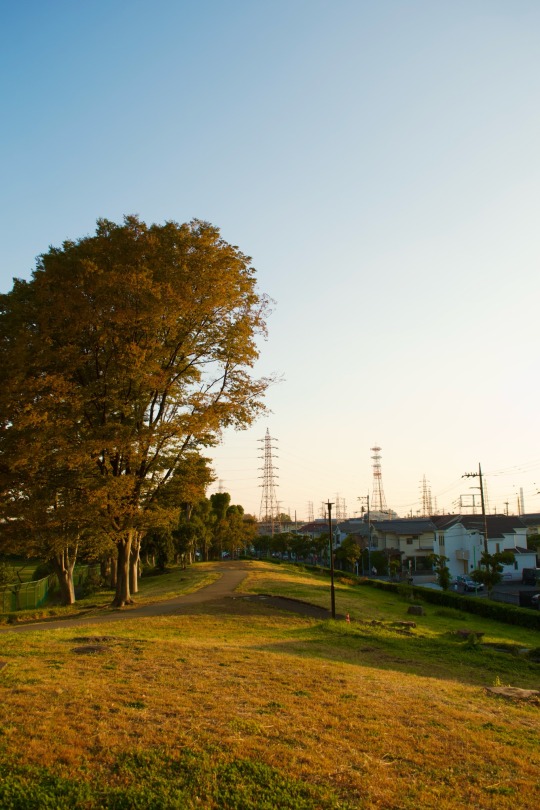
#japan#japan trip#japanese#japan travel#tokyo#japan vacation#tokyo tour#japan photos#landscape#nature#東京#東大和市#東大和#photo#film photography#photoblog#photography#tumblrphoto#tumblrpic#tumblr#photographers on tumblr#tumblog
16 notes
·
View notes
Text

New data on atmosphere from Earth to the edge of space
Two-decade-long dataset for entire atmosphere could benefit seasonal forecasts, climate models and space weather prediction
A team led by researchers at the University of Tokyo have created a dataset of the whole atmosphere, enabling new research to be conducted on previously difficult-to-study regions. Using a new data-assimilation system called JAGUAR-DAS, which combines numerical modeling with observational data, the team created a nearly 20-yearlong set of data spanning multiple levels of the atmosphere from ground level up to the lower edges of space. Being able to study the interactions of these layers vertically and around the globe could improve climate modeling and seasonal weather forecasting. There is also potential for interdisciplinary research between atmospheric scientists and space scientists, to investigate the interplay between space and our atmosphere and how it affects us on Earth.
Complaining about the weather, and about weather forecasters when they get things wrong, is a popular pastime for many. But a meteorologist’s job is not easy. Our atmosphere is multilayered, interconnected and complex, and global climate change is making it even harder to forecast both long-term and sudden, extreme weather events.
To help overcome these increasing challenges, researchers have created a dataset of the entire atmosphere. Ranging from September 2004 to December 2023, it spans multiple levels of the atmosphere from ground level up to the lower edge of space, about 110 kilometers above Earth’s surface. The region between about 50 km to 110 km (though exact ranges vary) is particularly of interest, as it is so notoriously difficult to study that it had previously been dubbed the “ignorosphere.” This region is too low for satellites and too high for weather balloons to observe, resulting in a shortage of data and consequently research. However, it is a fascinating area, characterized by vast global atmospheric tides and small-scale gravity waves which affect wind and temperature. It also plays an important role in the intensity of the impact of space weather events.
“The JAWARA (JAGUAR-DAS Whole neutral Atmosphere Reanalysis) dataset is a strong research tool which, for the first time, makes it possible to quantitatively understand atmospheric general circulation and the hierarchal structure of waves and vorticies in the mesospheric layer (which is above the stratosphere and about 50-90 km above Earth’s surface) and lower thermospheric layer (about 90-110 km above Earth’s surface) of the atmosphere, including the ignorosphere,” explained Professor Kaoru Sato from the University of Tokyo. “If we can better understand these layers, it would improve our ability to respond to climate change, extend the lead time of seasonal forecasts and advance our understanding of space weather phenomena.”
The team developed its new JAGUAR-DAS high-speed data assimilation system as part of an international project led by Sato. The system integrates observational data into a numerical model which can then produce data on atmospheric conditions. The resulting dataset, named JAWARA, makes it possible to perform detailed analysis of the general circulation of the atmosphere and its hierarchical structure.
“Atmospheric general circulation models which range up to the lower edge of space have only been developed by a limited number of research institutions around the world, including our own,” said Sato. “Recent studies indicate that extreme stratospheric phenomena can start at least in the upper mesosphere. Therefore, quantitative elucidation of phenomena in the mesosphere and lower thermosphere is extremely important for weather forecasting.”
The dataset is now openly available, and the team intends to use it to study the large-scale circulation and the hierarchical structure in the atmosphere, as well as vertical and interhemispheric (i.e., between the Northern and Southern hemisphere) couplings. They also hope to work in collaboration with space scientists to study the interactions between the atmosphere and space, particularly the mesosphere (where the highest clouds form) and ionosphere (located within the thermosphere and about 60-300 km above Earth’s surface, where many satellites are based).
IMAGE: This infographic shows the multiple layers of our atmosphere, extending from the ground up into space, and how the new dataset compares in coverage to those currently available. Credit D.Koshin, K. Sato, S. Watanabe and K. Miyazaki, 2025/ Progress in Earth and Planetary Science (PEPS)
3 notes
·
View notes
Text
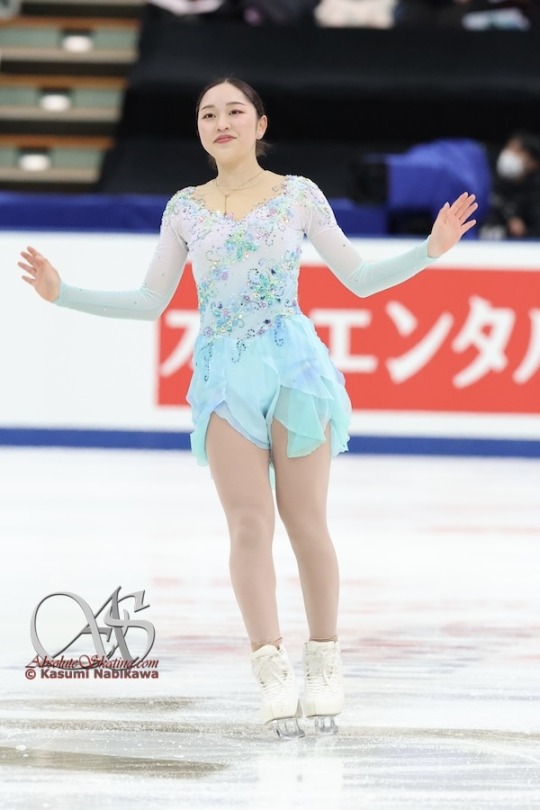

Maria Egawa's short program costume at the 2023 Japanese Nationals and 2023 Tokyo Regionals.
(Sources: 1 and 2)
13 notes
·
View notes
Text
All BLs from 2023
that I tracked, may not be exhaustive for some regions. Only BLs that ended in 2023 are included in this list.
LAYOUT: Title - sub/alt title - rating/10 - where to find it (with a US IP, if on multiples channels only one listed)
China & Hong Kong
Stay With Me AKA Addicted + fuck you fans - dnf - grey
Stay Still - 7 - YouTube
Japan
Blue Sky Complex - cnf - ?
Can I Buy Your Love From A Vending Machine AKA Sono Koi, Jihanki de Kaemasu ka? - cnf - ?
Candy Color Paradox AKA Ameiro Paradox - 8 - Gaga
Egoist - dnf - ?
I Cannot Reach You AKA I Can't Reach You AKA Kimi ni wa Todokanai - 10 - Net
If It’s With You AKA Even If I Fall In Love With You AKA Kimi to nara Koi wo Shite Mite mo’ - 7 - Gaga
Jack o'Frost - 5 - Gaga
Let's Eat Together Aki and Haru AKA Aki wa Haru to Gohan wo Tabetai - 6 - Gaga
Minato's Laundromat Season 2 AKA Minato Shouji Coin Laundry Season 2 - 6 - Gaga
My Beautiful Man 2 AKA Utsukushii Kare Season 2 - 8 - Viki
My Beautiful Man: Eternal AKA Utsukushii Kare Eternal - 8 - Viki
My Personal Weatherman AKA Taikan Yoho - 9 - Gaga
Naked Dinner AKA Zenra Meshi - 7 - Gaga
One Room Angel - dnf - Gaga
Our Dining Table AKA Bokura no Shokutaku - 9 - Gaga
The End Of The World, With You AKA Bokura no Micro na Shuumatsu - 6 - Gaga
Tokyo in April is AKA Shigatsu no Tokyo wa - 8 - Viki
What Did You Eat Yesterday Season 2 AKA Kinou Nani Tabeta? Season 2 - 100 - Gaga
Korea
A Breeze of Love - 8 - iQIYI
A Shoulder to Cry On AKA Comfort the Boy - 4 - Viki
All the Liquors AKA - Liquor - 8 - Viki
Behind the Shadows - cnf - ?
Bump Up Business - 6 - Gaga
Happy Merry Ending - 8 - Viki
Individual Circumstances - 7 - Viki
Jun and Jun - Jun & Jun - 9 - viki
Love Class 2 AKA Love Class Season 2 - 8 - Viki
Love Mate - 8 - Viki
Love Tractor - 9 - iQIYI
Our Dating Sim - 10 - Viki
Our Winter - 5 - YouTube
Sing My Crush AKA Follow The Wind - 8 - iQIYI
Star Struck AKA Starstruck - 6 - iQIYI
The Director Who Buys Me Dinner - 6 - iQIYI
The Eighth Sense - 9 - Viki
The New Employee AKA The New Recruit AKA Shinib Sawo - 9 - Viki
Unintentional Love Story - 9 - iQIYI
Why R U? - (Korean adaptation of Thai original) - 8 - iQIYI
Myanmar
The Love Ring - dnf - YouTube
The Philippines
Ever After - dnf - YouTube
My Story - dnf - YouTube
Our Story - dnf - Oxin Films
Stay - dnf - YouTube
The Day I Loved You - dnf - YouTube
Tie The Not AKA Under the Same Sky - 7 - Prime
Singapore
Pure Vanilla - Singapore - 7 - Gaga
Taiwan
HIStory5: Love In The Future (HIStory 5) - 7 - Viki
Kiseki: Dear to Me - (formerly Miracle) - 9 - Gaga
My Tooth Your Love - 8 - Viki
Stay By My Side - 8 - Viki
You Are Mine - 7 - Gaga
Thailand
609 Bedtime Story - (OhmFluke) - 6 - WeTV
7 Days Before Valentine - cnf - One31
A Boss and a Babe - (ForceBook) - 7 - YouTube
Absolute Zero - 6 - iQIYI
After Sundown AKA Saengrawi - (ZeeNew) - cnf - ?
Bake Me Please - 6 - Gaga
Be Mine Super Star Superstar - (JaFirst) - 6 - Viki
Be My Favorite - AKA You Are My Favorite - 8 - YouTube
Bed Friend - (NetJames) - 8 - YouTube
Between Us - (BounPrem) - 8 - iQIYI
Beyond the Star - dnf - iQIYI
Boyband the series - 3 - grey
Cafe In Love - 3 - grey
Chains of Heart - 3 - iQIYI
Cherry Magic (Thai remake) - (TayNew) - cnf - YouTube
Chiang Mai Adventures - 100 - subscribers only
Colorful Melody - cnf - WeTV
Crazy Handsome Rich - dnf - Gaga
Cutie Pie 2 You special - (ZeeNuNew TutorYim MaxNat) - 7 - YouTube
Dangerous Romance - (PerthChimon) - 8 - YouTube
Dear Kitakyushu - cnf - ?
Destiny Seeker - (EarthBank) - 8 - WeTV
Dinosaur Love - Buddy Line Y Animal AKA Buddy Line Y(aoi) Animal - dnf - iQIYI
Friend. Boy Friend - cnf - ?
Future the series - 7 - YouTube
Hidden Agenda - (JoongDunk) - 8 - YouTube
Hit Bite Love AKA - Hit Bite Lick - 3 - YouTube
House of Stars - dnf - iQIYI
I Feel You Linger in the Air - 9 - grey
I Will Knock You - 5 - Gaga
La Pluie - 9 - Viki
Laws of Attraction - 9 - iQIYI
Love in Translation - 6 - iQIYI
Love Syndrome III - characters from Unforgotten Night - 100 - WeTV
Low Frequency - 6 - iQIYI
Make a Wish - 8 - grey
Man Suang - (MileApo) - cnf - ?
Middleman’s Love - (TutorYim) - 6 - iQIYI
Moments Of Love - cnf - ?
Moonlight Chicken - (EarthMix) - 8 - YouTube
My Biker - cnf - ?
My Blessing - 2 - YouTube
My Dear Gangster Oppa - 8 - iQIYI
My School President - (GeminiFourth) - 9 - YouTube
My Universe - Casanova Begins - 2 - iQIYI
My Universe - Fake Love - 4 - iQIYI
My Universe - Pisces of Me - 4 - iQIYI
My Universe - The Camp Fire - 5 - iQIYI
My Universe - Marry Go Round - 5 - iQIYI
My Universe - Right Time, Right You - 5 - iQIYI
My Universe - You Are My Soulmate - 6 - iQIYI
My Universe - Lucky Love - 7 - iQIYI
Naughty Babe - (MaxNat) - 8 - iQIYI
Never Let Me Go - (PondPhuwin) - 8 - YouTube
Night Dream - dnf - YouTube
Only Friends - (ForceBook) - 3 - YouTube
Our Skyy 2: A Boss and a Babe - (ForceBook) - 6 - YouTube
Our Skyy 2: A Tale of Thousand Stars - (EarthMix) - 8 - YouTube
Our Skyy 2: Bad Buddy - (OhmNanon) - 8 - YouTube
Our Skyy 2: My School President - (GeminiFourth) - 8 - YouTube
Our Skyy 2: Never Let Me Go - (PondPhuwin) - 8 - YouTube
Our Skyy 2: Star in My Mind - (JoonDunk) - 8 - YouTube
Our Skyy 2: The Eclipse - (FirstKhao) - 8 - YouTube
Our Skyy 2: Vice Versa - (JimmySea) - 6 - YouTube
Pastsenger AKA - Past-senger - 4 - Gaga
Remember Me - (JaFirst) - 5 - Gaga
Senior Love Me - 3 - YouTube
SHADOW - dnf - x
Step By Step - 9 - Gaga
The Luminous Solution - 3 - Gaga
The Promise - 4 - YouTube
The Whisperer - cnf - ?
Till the World Ends - dnf - grey
Tin Tem Jai - 5 - Gaga
Tin Tem Jai special - 4 - YouTube
Venus in the Sky - 5 - iQIYI
Wedding Plan - 7 - YouTube
Vietnam
Love Bill - source title: - LỜI HỨA MÙA HẠ - dnf - YouTube
Mr Cinderella 2 - dnf - YouTube
Stormy Honeymoon - dnf - YouTube
Stupid Genius - 7 - YouTube
The Star Always Follow You - Lấp Lánh Tựa Ánh Sao Trời - dnf - YouTube
Vian the series - (Bah Vinh) - 4 - YouTube
cnf = could not find
dnf = did not finish
requested by @guzhu-furen
#I didn't tidy this up#sorry#just copy and paste and clean it as needed#all the bls i tracked in 2023#thai bl#korean bl#japanese bl#asian bl#asian dramas#pinoy bl#vietnamese bl#hong kong bl#chinese bl#singapore bl#taiwanese bl
76 notes
·
View notes
Text




There are hundreds of different Japanese ramen styles with cities all across Japan vying for the title of the country's top noodle city, including Sapporo with its miso ramen, Tokyo with its shio ramen, and Fukushima with its kitakata ramen.
But if there is a Japanese metropolis of ramen… then it must be Fukuoka. Located in northern Kyushu, it's the capital of Fukuoka Prefecture and home of the extremely popular tonkotsu (pork bones) noodle dish, Hakata ramen. 🐷
After our 4-hour flight, we went straight to Hakata Issou (博多一双 博多駅東本店). The ramen here is playfully referred to as a "Tonkotsu Cappuccino" because of the frothy, cappuccino-like top layer, and below this layer awaits a heavy maelstrom of soup. They apparently use 2-3 times more pork bones than other places, constantly adding them to giant pots. You won’t be able to ignore the smell, but if you can get past this, they serve a tasty bowl! Fukuoka Prefecture, Kyushu region, Japan November 20, 2023
3 notes
·
View notes
Text
Trying to figure out Mikoto's moves through out MeMe
This is part 2 to my post about finding the train the Mikoto takes in Double. I highly recommend reading that first as that will provide some context to this post.
Since I have no proper place to put this, I'll put it here. I will not be trying to figure out what company he works at because it doesn't exist. In general, you aren't allowed to name drop an actual company in a story like this.
First, lets talk about how Tōkyo is set up. Tōkyo is a prefecture, not a city. It's officially referred to as Tōkyō-to (東京都), or Tōkyo Metropolis. The part that most people think of when they think about Tokyo, are the Special Wards. These are where the historical border of Tokyo City was in 1936 before it was abolished and turned into the prefecture that it is today on July 1st 1943. Some of the 35 wards that existed in 1936 merged into the 23 wards we have today. Then there are the cities, towns, villages and islands. On the mainland, this region of Tokyo is called the Tama Area.

Within the wards, there are 2 regions; Yamanote (山の手) and Shitamachi (下町). Yamanote contains upper-class areas west of the Imperial Palace. The specific wards in Yamanote are Shibuya, Shinjuku, Nakano, Suginami and Meguro. Shitamachi contains Chuo, Taito, Arakawa, Sumida, Koto, Edogawa, Katsushika ans Adachi. Chiyoda, Minato and Bunkyo are shared by the 2.
In Chiyoda,
Shitamachi has the Kanda area
Yamanote has the Kōjimachi Area
In Minato,
Shitamachi has Shinbashi, Higashi-Shinbashi and Nishi-Shinbashi
Yamanote has the Azabu and Akasaka Areas
In Bunkyo,
Shitamachi has Nezu and Sendagi
Yamanote has the rest of the Hongo Area and all of the Koishikawa Area
The 2 regions have vague definitions as they are defined more on culture than geography.
So now, let's talk about Mikoto. I believe that he never leaves Shibuya in MeMe. As we know, Mikoto preffers to bike instead of take the train. In total, Shibuya is 15.11 km2 or 5.83 sq mi big. So biking around the whole city would not be unimaginable.
By the texts in Double, we can assume that he's leaving to go to work. If we are going with this, that means that he would live in Harajuku.
The picture on his prisoner card is in Ebisu 3-Chome. A chōme is a district of a town. So 3-Chome would be the 3rd district. 3-Chome is the biggest residential area out of the 4 that Ebisu has, having about 4,700 residents as of January 1st 2023.
So here's what I think happened. Mikoto leaves home and takes the train to Ebisu on a day that he knows his victim will be out very late. There are plenty of nooks and carneys around the back of the station that he could dip into. So when the guy passed him, Mikoto got his attention then killed him. Mikoto was then able to walk back to Harajuku undetected by taking backroads that don't have street lights. Or he could have just taken the train back since it was probably towards the end of the service day.
#milgram#ミルグラム#milgram project#mikoto kayano#kayano mikoto#milgram analysis#milgram theory#fools mate research
5 notes
·
View notes
Text

Gabrielle Lisa Thomas (December 7, 1996) is a track and field athlete in 100 and 200-meter sprint. She won the bronze medal in the 200 m and a silver as part of the women’s 4 × 100 m relay at the 2020 Tokyo Olympics. On August 25, 2023, she claimed the 200m silver medal in the 2023 World Athletics Championships in Budapest with a time of 21.81 seconds. She would also go on to win gold as part of Team USA in the women’s 4x100m relay final with a championship record of 41.03 seconds. She is the 2024 200m, 4X100 m, 4x400 m Olympic champion.
She was born in Atlanta to Jennifer Randall and Desmond Thomas. She has a twin brother.[In 2007, Randall moved the family to Massachusetts to teach at the University of Massachusetts. While the family settled in Florence, she played softball and soccer and joined the track and field team at the Williston Northampton School. She was inspired to run by Allyson Felix, stating that her first memory of a track race was watching Felix while at her grandmother’s house. In four years at her high school, she set multiple school records and was the MVP every year.
A graduate of Harvard University, she studied neurobiology and global health as an undergraduate. She finished her MA in epidemiology at the University of Texas Health Science Center at Houston at their Austin regional campus. #africanhistory365 #africanexcellence
2 notes
·
View notes